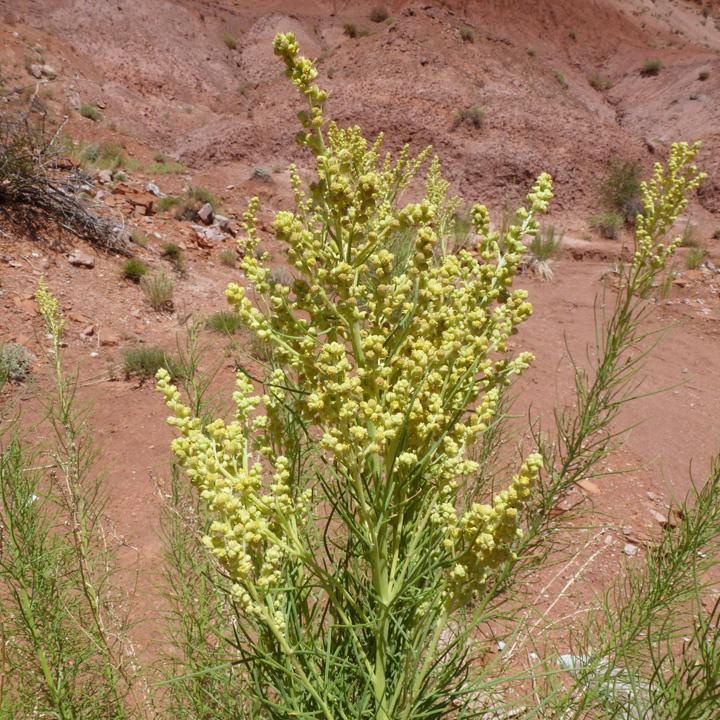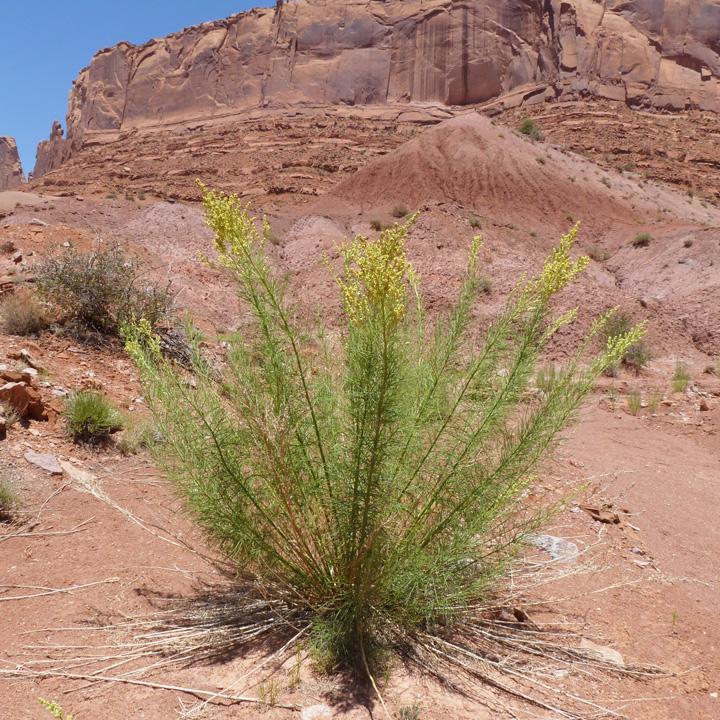Selected Plants of Navajo Rangelands
Copperweed

Copperweed is a woody-based forb, growing 3 to 5 feet tall, with many slender gray stems. The plant turns and stays copper colored through summer. It grows in semidesert climate in summer precipitation areas. It is most likely to be found along streambeds and gullies with extra moisture. It is usually on soils high in salt.
Cattle, sheep, and elk may eat copperweed when other feed is scarce. Cattle are more likely to eat this plant in the fall when they are being trailed. Copperweed may cause poisoning in livestock. Symptoms of poisoning include dullness, weakness, and coma followed by death without a struggle. In humans, copperweed may cause skin irritation.
*Description courtesy of Utah State University's Range Plants of Utah.

©2018 NMSU Board of Regents.
Individual photographers retain all rights to their images.
Partially funded by the
Western Sustainable
Agriculture Research and Education Program
(westernsare.org; 435.797.2257),
project EW15-023.
Programs and projects supported by Western SARE are
equally open to all people.